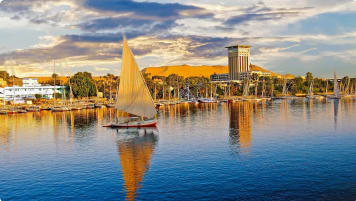Highlights of Egypt: The Pyramids and the Sphinx
Egypt is home to one of the only remaining wonder of the Ancient World: The Great Pyramids of Egypt. The pyramids are monumental tombs for pharaohs from the 4th dynasty and relics of Egypt's Old Kingdom era, constructed around 4,500 years ago.
1 Jan 20 · 5 mins read
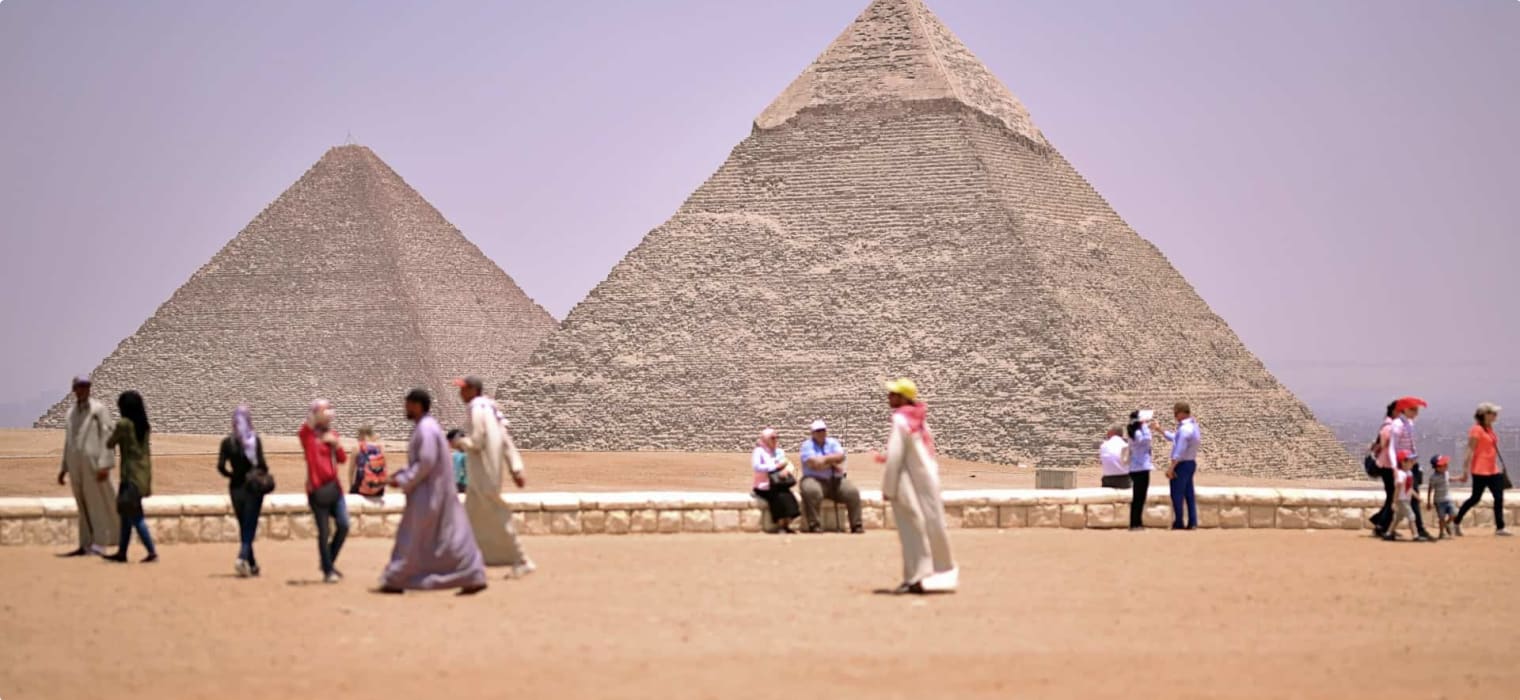
Highlights of Egypt | The Great Pyramids of Giza and the Sphinx
Egypt houses one of the last wonders of the Ancient World – the Great Pyramids of Egypt. These monumental tombs were built around 4,500 years ago during the Old Kingdom era of ancient Egyptian civilization, specifically in the 4th dynasty. The Giza pyramid complex, part of the legacy from this era, stands out as a remarkable testament to ancient engineering prowess. Even in the 21st century, the pyramids continue to captivate viewers with their sheer magnitude and grandeur, maintaining their status as one of the Seven Wonders of the Ancient World. Presently located near Cairo,, they remain a source of fascination for visitors, historians, and archaeologists alike. The mystery surrounding their construction, with approximately 2.3 million white limestone blocks weighing nearly 3 tonnes each, leaves experts pondering the methods employed by the ancient Egyptians to quarry, transport, and assemble these colossal structures.
Adjacent to the pyramids lies the enigmatic Sphinx statue, a 74-meter-long monument sculpted from the limestone bedrock of the Giza Plateau. Constructed between 2589 and 2504 B.C. (BCE), the Pyramids of Giza consist of three main pyramids – those of Khufu, Khafre, and Menkaure, built as mortuary complexes for the respective rulers: King Khufu, Pharaoh Khafre, and Pharaoh Menkaure. These pyramids, each a marvel in its own right, symbolize the rich history and architectural sophistication of ancient Egypt.

The Great Pyramid of Khufu
The Great Pyramid of Khufu, also known as Cheops, was commissioned by Pharaoh Khufu, the second ruler of the Fourth Dynasty and the son of Sneferu and Queen Hetepheres I. This iconic pyramid on the Giza plateau stood as the world’s largest man-made structure until the completion of the Eiffel Tower in 1889. Egyptologists estimate that the construction of Khufu’s Pyramid spanned 23 years and was accomplished through the labor of conscripted workers. Originally towering at 146 meters, comparable to the height of a modern 30-storey office building, today it stands at approximately 138 meters in height. The Great Pyramid is flanked by three smaller pyramids, known as the Queens’ Pyramids, believed to have been constructed for Khufu’s three wives.
Initially encased in white limestone, the Great Pyramid’s casing has since eroded away. However, the precision of the limestone blocks’ alignment was so remarkable that it is said a knife blade could not fit between them, underscoring the exceptional craftsmanship of the ancient builders.

Khafre’s Pyramid and the Sphinx

Khafre, the son of Khufu, constructed the second pyramid at Giza around 2520 B.C. While the identity of Khafre’s mother remains uncertain, many scholars speculate that it could be Queen Meritites I, based on an inscription honoring her by Khafre. His temple, situated on slightly elevated ground relative to Khufu’s, was positioned to create the illusion of greater height, although it stands at a lesser 136 meters tall compared to the Great Pyramid. Some remnants of the original polished limestone casing still endure.
At the Giza complex stands the grand and imposing Great Egyptian Sphinx, a colossal limestone statue embodying a mythical creature with the body of a lion and the head of a human, traditionally credited to Khafre. This majestic figure is thought to have been sculpted in the likeness of the Pharaoh and placed there as a guardian of the pyramid ensemble. Despite enduring damage from natural elements like wind, groundwater, and air pollution over time, hints of red and blue pigmentation hint at its once vibrant appearance. Notably, the statue’s nose is notably absent, with historical debates suggesting it was lost to 16th-century Turks or perhaps due to cannon fire by Napoleon’s troops. Presently, significant efforts are invested in conserving and safeguarding the Great Sphinx to prevent further deterioration from environmental factors. Concerns raised by geologists and archaeologists center around the potential collapse of the sphinx’s head due to erosion, particularly given the weakened state of its neck over time. Special attention is given to the area beneath the head, recognizing its susceptibility to erosive forces owing to its delicate composition.
Menkaure’s Pyramid

Menkaure, the son of Khafre, constructed the smallest pyramid amongst the famous trio, towering at 65 meters tall, which is approximately one-tenth of the size of Khufu’s colossal pyramid. This pyramid, built around 2490 B.C., signifies a shift in focus within ancient Egyptian practices, as Egyptology scholars suggest a transition from constructing grand tombs to elaborate temples dedicated to the gods. Despite its size, Menkaure’s pyramid boasts the most intricate mortuary temple, featuring a descent through three distinct levels. Interestingly, Menkaure passed away before the completion of his pyramid, and it was finalized by his son, Shepseskaf.

Each of these pyramids was meticulously crafted as a sacred mausoleum to safeguard the Pharaoh’s remains and aid in their journey to the afterlife, equipped with provisions for the eternal voyage. The presence of sarcophagi in the pyramids solidifies the belief that they served as royal burial grounds. However, despite the presumed interment of the kings within their pyramids, no bodies have ever been discovered at these sites, hinting at ancient tomb raiding activities. What remains in these pyramids are fractured sarcophagi left behind by grave robbers who likely could not transport them beyond the pyramid’s corridors. The ultimate resting places of these Pharaohs are destined to remain shrouded in mystery.
The enigmatic Giza pyramids in Egypt stand unparalleled globally, emerging mystically from the desert landscape, symbolizing the architectural prowess and meticulous planning of the ancient Egyptians and their ruling dynasties. Today, visitors can explore the entire Giza complex, marvel at the three imposing pyramids and the enigmatic Sphinx, navigating through concealed chambers and admiring the historical relics and archaeological marvels linked with these ancient structures. These monuments encapsulate profound historical significance, embodying the wisdom and craftsmanship of a bygone civilization, offering timeless lessons to modern humanity.
Situated approximately 20 km south of Cairo, the Great Pyramids of Giza and the Sphinx beckon travelers to embark on a captivating journey through Egypt’s rich heritage. In Odyssey’s Egypt Tour, accompanied by experienced tour leaders and knowledgeable local guides, participants can immerse themselves in the allure of the pyramids. A quintessential experience at Giza includes a brief camel ride against the breathtaking backdrop of the Pyramids, a cherished image synonymous with Egyptian exploration. This tour presents the opportunity to delve into Egypt’s antiquities and iconic landmarks, catering to enthusiasts of geology, archaeology, or anyone fascinated by the enthralling history and origins of Egypt, promising an educational and enriching voyage.
Articles about Egypt published by Odyssey Traveller.
- Uncovering Ancient Egypt: What we can learn from Egyptologists
- From Cairo to NAC: Egypt builds a new capital city
- Questions about Egypt: The Definitive Guide
- Egyptian Linen Treasures
- Discover Egypt with ten great books
- Cairo development site reveals ancient statue
- The time to visit Egypt is now
External articles to assist you on your visit to Egypt
Related Tours
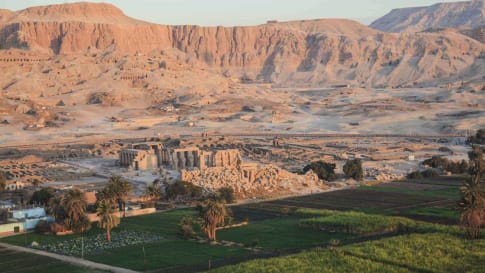
18 days
Nov, JanEgypt tour: escorted small group history & cultural tour of Egypt
Visiting Egypt
Our small-group program, designed for senior couples and solo travellers, offers a rich journey through Egypt's past and present. You'll explore modern marvels like the Aswan Dam and immerse yourself in pivotal sites such as Tahrir Square, both key to understanding Egypt’s enduring influence on civilization. This tour is proof that Egypt remains a vital crossroads of history and culture. We explore Egypt's fairy-tale natural beauty, its ancient history, and Imperial heritage, its World Heritage Sites, and world famous cities, all with some truly spectacular scenery along the way. For those seeking an even deeper experience, we also offer opportunities to extend your travels with our tours in Morocco, Jordan, or Tunisia before beginning your Egyptian adventure.
From A$12,950 AUD
View Tour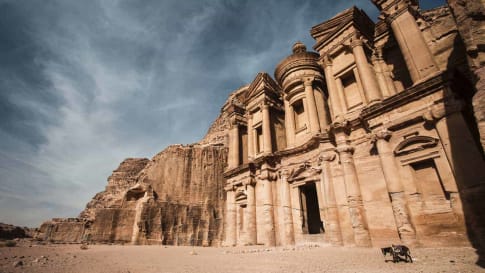
9 days
Jan, OctAncient History of Jordan | Escorted Small Group Tour
Visiting Jordan
Explore Jordan, visiting its capital city, Amman Jordan, the ancient Desert Castles, Petra and the Dead Sea on a small group package tour for mature and senior travellers travelling as a couple or Solo.
From A$6,750 AUD
View Tour
20 days
Sep, AprCrete Small Group Tour: The Minoans
Visiting Greece
Crete rich in UNESCO World heritage sites this small group escorted tour provides a travel experience for guests with experienced local guides to remember. For senior couples or single travellers who seek to travel with other like minded people to destinations rich in ancient history then this in one of many small group journeys to be enjoyed.
From A$13,500 AUD
View Tour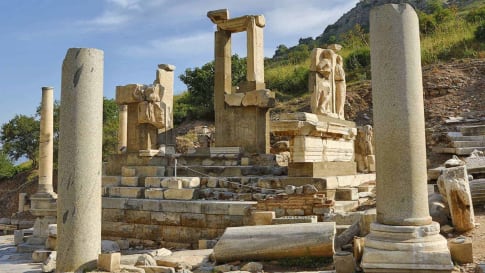
21 days
Apr, AugSmall group tour of Ancient Turkey
Visiting Turkey
As a travel company we seek to keep guests off the beaten path. Trips that are remembered for authentic experiences. Our small group journeys in Turkey are fully escorted by an experienced local guide and an Odyssey guide to give this type of experience whether at one of the many UNESCO World heritage sites explored or local bazaars. It is always about the adventure and memories that we will create.
From A$17,295 AUD
View Tour
